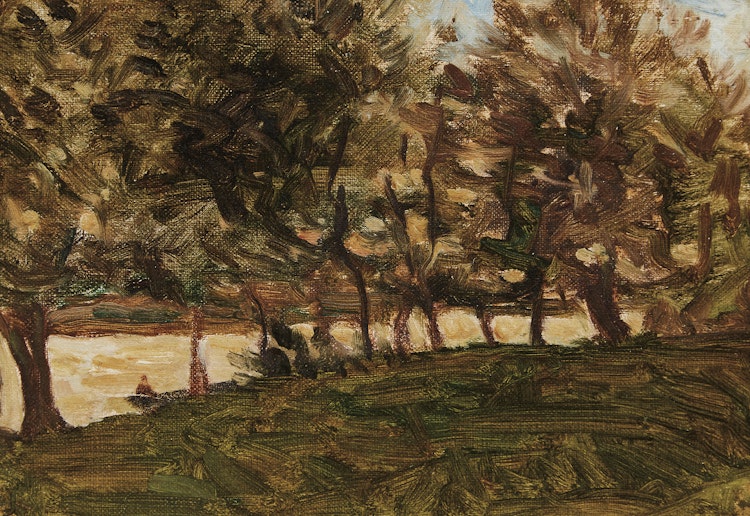Trees Along a River by James Wilson Morrice

James Wilson Morrice
Trees Along a River
oil on canvas
the artist studio stamp on the reverse
6.5 x 9 ins ( 16.5 x 22.9 cms )
Auction Estimate: $20,000.00 - $30,000.00
Price Realized $24,000.00
Sale date: November 22nd 2021
Continental Galleries, Montreal
Private Collection, Toronto
Kastel Gallery, Montreal
Private Collection, Ontario
We extend our thanks to Lucie Dorais, Canadian art historian and author of “J.W. Morrice” (National Gallery of Canada, 1985), for contributing this essay.
Share this item with your friends
James Wilson Morrice
(1865 - 1924) RCA
Born in Montreal to a prominent family of textile merchants, Morrice spent most of his life abroad, much of it in Paris. He had gone there to enrol in the Academie Julian, the best-known of the private art schools that lured dozens of young Canadian artists to cross the ocean with the promise of technical proficiency and stylistic sophistication. Soon Morrice was studying with the Barbizon painter Henri Harpignies and looking intently at the pictures of the cutting-edge Nabis members. Affable and gregarious, Morrice was well liked in Paris among the local and emigre vanguard, notably his friends the great Henri Matisse and the influential American painter Robert Henri. He did well, showing in the most prestigious exhibitions of new art, including the Salons, and selling to discerning European collections of the highest rank. If he is remembered mostly in Canada today, it may be because Canadian collectors repatriated most of his pictures after his death, leaving Europeans with little to go on. He had been careful to maintain a reputation at home, showing here regularly and returning frequently for Christmas, which would explain why most of his Canadian pictures are winter scenes. Young Canadian artists held him in considerable esteem during his lifetime for his fearless modernism and his success in Europe. A stylistically hybrid artist, Morrice combined a lush and often dusky Post-Impressionist tone with nonchalant brushwork of a plumb assuredness, softening the blunt structures of his Fauvist friends. What results are paintings as complicated as they are straightforward and often redolent with suppressed emotion. Morrice tends to smallish pictures that draw you in, only to surprise you by their resolute diffidence. Irresistible and remote, his pictures ask for intimacy but keep their distance, like nostalgia, like longing. Morrice ran with a fast crowd of glittering cosmopolitans. Alcoholism got the better of him by the end of his fifties; his health ultimately failed while in North Africa where he had painted with Matisse and where he died at fifty-eight.
Source: National Gallery of Canada

